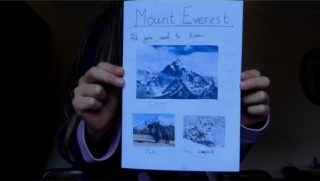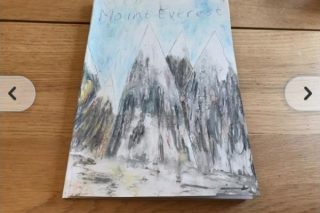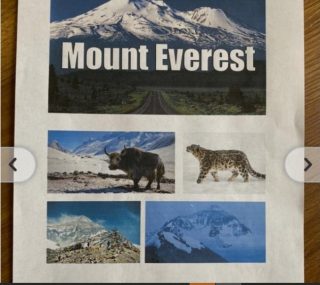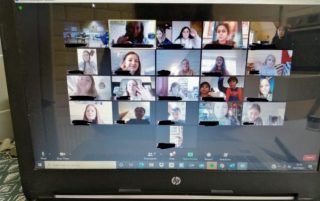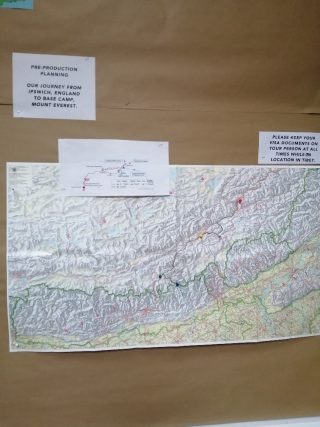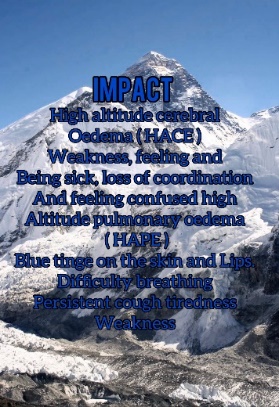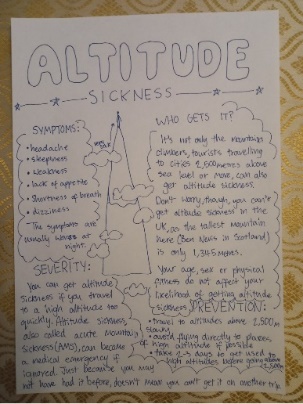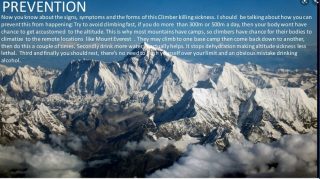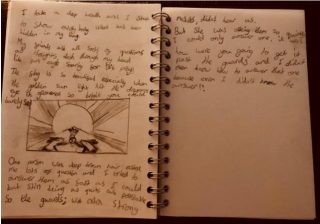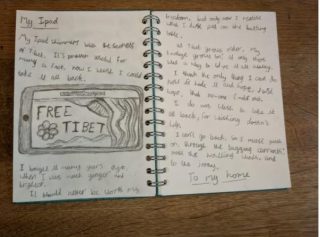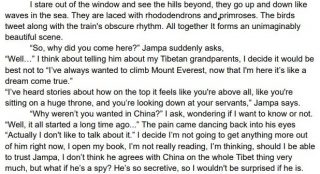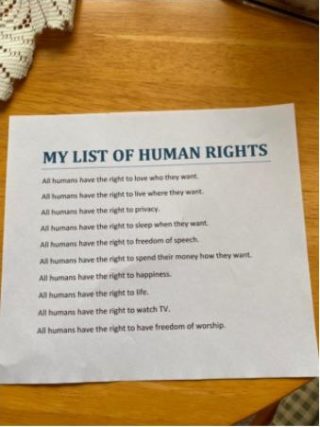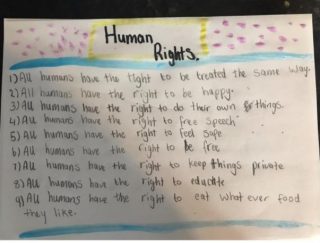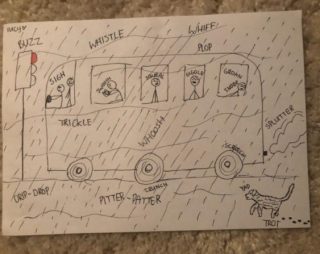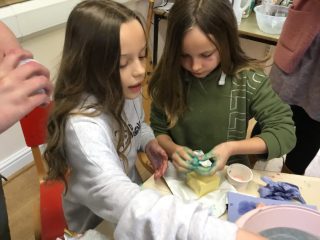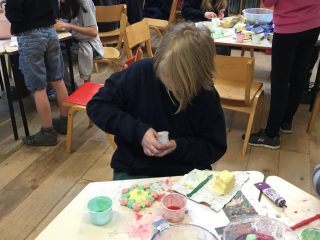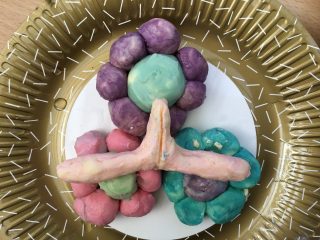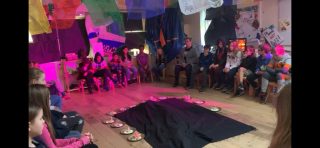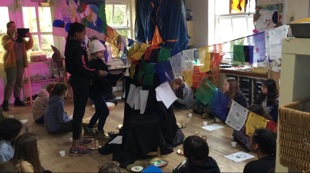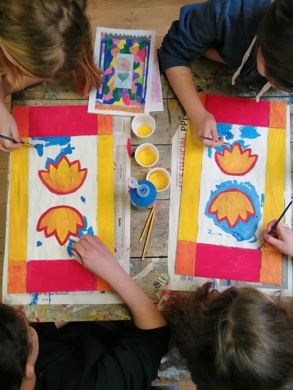W/c 4th January 2021
With schools once again closed due to COVID-19, the beginning of term would be slightly different than planned… Taking Mantle of the Expert online was something we now had some experience of and were prepared for. With the introduction of thrice weekly zoom sessions in addition to daily task setting, engagement has been high with almost 500 posts to our online portal from the class in just 8 days. Fantastic!
We began the term with a whole class meeting via Zoom, immediately assuming our roles as members of a documentary film making team who specialise in filming in extreme conditions. Teachers- in-role as associates- outlined our latest commission from broadcasting giant NETFLIX. We are to film the American mountaineer Conrad Anker’s journey to the summit of Mount Everest.
Many questions and lines of enquiry arose. What would filming in these conditions be like? Have we the experience and equipment required for such an undertaking? Who is Conrad Anker, and why does he wish for his ascent to be filmed?
Pupils are tasked with co-constructing the company’s history. Using a world map, pupils conduct research and suggest titles and locations of previous documentaries we have filmed. They also describe in detail the landforms they have encountered, along with any significant experiences they have had whilst on location.
One pupil wrote, “On December 2nd 2010 our team ventured to the southernmost continent on Earth to discover the secrets of it’s landscape. Our oars found themselves splashing against the icy waters of the Antarctic Peninsula. Breath-taking shots of the Trans-Antarctic mountains were captured by our drone as the clouds powdered them with snow.”
Later in the week we contacted Conrad Anker (teacher in-role) via zoom to discuss the documentary. Having discovered the body of British climber George Mallory in 1996, Anker wishes to find further evidence that Mallory and his partner Sandy Irvine were the first men to have ever climbed Mount Everest back in 1924. Currently the title belongs to Sir Edmund Hillary and Sherpa Tenzing Norgay. Mallory and Irvine were last seen only a few hundred yards from the summit before being engulfed by the clouds and never to be seen again. Anker will be looking for evidence they DID make it to the summit.
Out of role pupils conduct research into filming and climbing equipment. They also begin to create information books on Mount Everest, complete with all the necessary features such as glossary, subheadings, and contents pages.
We have been told the application process to join the team on location in Tibet will begin next week.
W/c 12th January 2021
This week pupils have been composing formal letters of application to join the NETFLIX team, filming on their behalf on location in Tibet and on Mount Everest. Using the correct features of a formal letter, coupled with their persuasive writing skills the letters certainly mark them out as strong potential candidates. One pupil writes:
“I have spent many years training in nature photography. I am a skilled cameraman and the equipment that you will require for the journey I have used many times. I have been recognised as exceptionally talented in my previous work on the documentary: “The Planet” with David Attenborough. I am skilled at using drones. When the weather is unpredictable I am able to control the drone to capture every moment, whilst keeping the team safe.”
Ahead of our company’s potential new project, pupils have been creating information books about Mount Everest. During out of role discussions, it transpired that our knowledge of Everest- and mountain conditions in general- would need to be greater.
Pupils have had the opportunity to use their growing knowledge of measuring and drawing angles to measure trees. We would have used mountains but unfortunately they are scarce in Suffolk! Pupils have investigated how this is done and have taken to their local surroundings to try it out for themselves.
Zoom meetings continue to be a great way to connect with one another and engage with Mantle of the Expert online.
W/c 19th January 2021
On an international video conference call with NETFLIX representative Jürgen, (Co-head Duncan in-role) the team are informed that their applications to join the shoot in Tibet have been successful. They must now await further instruction from the Chinese Embassy regarding their Visa applications. We meet with Embassy representative Mei Ling (teacher in-role), who informs us that entry into Tibet -where we are to acclimatise and begin our filming- can be difficult to obtain. Journalists are usually denied access to Tibet, and so we will need to be specific when completing the forms about what our intentions are once on the ground. She also informs us we will be under the supervision of registered tour guides for our journey from Lhasa Airport to Base Camp Everest. Out of role, a discussion ensued about the restrictions. Several pupils questioned why they are they so stringent.
We began to plan our transportation to Lhasa from Ipswich. Pupils researched different ways to reach our destination, calculating the cost per person and the duration of the journey.
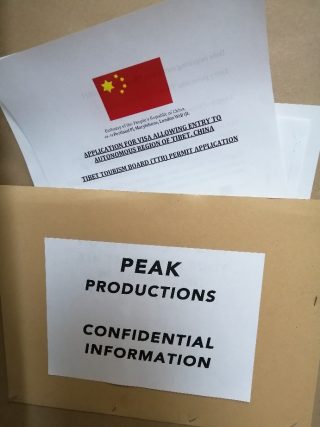 Later in the week we received a video message from Mei Ling. Several of the team have had their entry Visas denied! Apparently the authorities were unhappy with ‘Film Crew’ listed as an occupation. It would take some careful amendments, explaining in detail our commission with NETFLIX and Conrad Anker before approval could be given. The team question what it will be like in Tibet, given the secrecy that seems to surround it.
Later in the week we received a video message from Mei Ling. Several of the team have had their entry Visas denied! Apparently the authorities were unhappy with ‘Film Crew’ listed as an occupation. It would take some careful amendments, explaining in detail our commission with NETFLIX and Conrad Anker before approval could be given. The team question what it will be like in Tibet, given the secrecy that seems to surround it.
Out of role, pupils create a bank of training resources about altitude sickness. We are told it is vital that all team members are able to recognise altitude sickness and be able to act upon it should the likely need arise on our ascent. Videos slide shows and leaflets were presented via our online learning platform.
W/c 25th Jan 2021
With routes having been meticulously planned by the team and all Visa applications amended and accepted, we arrive at Lhasa Airport, Tibet. There we are met by our tour guides Lolo and Jampa (teachers in-role via ZOOM) in the arrival hall.
We are able to overhear their private conversation, and it is noticeably clear they are feeling uneasy about being at Lhasa Airport, under the watch of the Chinese Soldiers. Pupils note their comments about Lhasa: “This isn’t the real Tibet!” and “We are going to have to be really careful with this lot. Did you hear about all the trouble they had with the Visas? We are going to be watched wherever we go now.”
Pupils reflect on their arrival in Lhasa in their travel journals, using their first impressions of Lolo and Jampa together with their own experiences of airport travel. One pupil wrote:
“I enter to see an overwhelming cluster of people waiting for me. Their words are echoing through the cavernous hall. I catch a glimpse of the receptionist explaining delays to angry parents and confused children. Pillars shoot up towards a dirty ceiling above, and unclean windows filled with the sunlight illuminating the gathering dust as it settles on the surface of desks benches and other forgotten things. I stand and watch people shuffling and chatting amongst themselves. My eyes start to wonder the room and I see a hanging sign with foreign words, I cannot comprehend.”
Our narrative evolved further when, through drama it transpired that several team members were in possession of items which are forbidden by the Chinese government in Tibet!
Out of role and throughout the week, pupils noted temperatures in Ipswich, Lhasa and on Mount Everest. They presented their data in the form of graphs and tables and used these to investigate the differences in the three locations.
Pupils used tin foil to create sculptures of the Himalayas, then employed photography and other mixed media techniques to represent mountain scenes on ‘The Roof of the World’.
W/c 1st and 8th February 2021
The week began with pupils being given the opportunity to pose questions and suggest potential lines of enquiry. Many wanted to know more about the reasons for Jampa and Lolo’s anxiety.
- Can we really trust Jampa and Lolo?
- Why are they so nervous?
- Should we tell them about the forbidden items we have in our luggage?
- Why are there so many Soldiers at Lhasa airport?
- Is there a reason why the Chinese authorities are so strict about Tibetan objects?
- What will happen to us if our forbidden objects are found by the authorities?
- Merle says Jampa is gay. Is it forbidden to be homosexual in Tibet?
- Do different religions have different rules?
In our travel journals we wrote about our forbidden items. We considered why they were important to us, and why it was so important we bought them on our trip. Many stories emerged.
Via the SEESAW app, pupils were able to view Jampa and Lolo’s stories presented as video monologues. We learnt that Jampa is a Chinese national who came to live in Tibet after the Dalai Lama spoke in support of gay marriage. He had been disowned by his family in Beijing for being homosexual. Lolo comes from a family of Tibetan Nomads called ‘Drokpa’. In recent years it has become too difficult for them to continue nomadic living. The Chinese occupation of Tibet means they were being targeted at checkpoints. Pupils used these to form the basis of a journal entry entitled ‘The Road to Shigatze’ where they reflected on these stories.
Pupils were invited to present significant events in the lives of the two men. Some were presented as short videos, and others as photographed stills or drawings. We learnt that as a young man, Jampa had fallen in love with a friend who laughed at him when he revealed his true feelings. We also learnt that as a child Lolo was smacked around the head by a soldier for singing a traditional Tibetan song. We spent time considering how their lives could have been different.
We considered what we thought to be basic human rights and examined in detail both The Rights of the Child and the Universal Declaration of Human Rights. Pupils investigated the data surrounding human rights violations, and presented it using graphs. They discovered China has one of the worst records in the world for this!
Pupils had the opportunity to compose a soundscape for the next part of our narrative, as we began the bus journey from Lhasa to Base camp. Using homemade percussion sounds pupils would represent the journey on the bus, and the moment that it was pulled over for inspection by soldiers at a surprise checkpoint. Many used sketch-noting to consider some of the onomatopoeic sounds of the journey.
W/c 22nd February 2021 & 1st March 2021
While on the coach to our next stopover our guide Lolo calls us together. He tells us there is a family emergency he must attend to. We are presented with a choice: Go with Lolo, Jampa and the coach to his village or to wait for him at the next service station where we are due in 30 minutes. A decision must be made, and quickly.
Via video conferencing pupils -in role as Peak Productions- consider their options. Many feel it would be more dangerous to be left alone in Tibet without a guide, given the political situation. Some note that our visa stipulate we MUST remain with a guide and that staying at the service station without them is a violation. Others question the intentions of our guides. Could this be a trick?
Through dramatic convention we are able to observe a WhatsApp conversation between Lolo and his wife. We learn that it is Lolo’s son Norbu. He is critically ill in hospital. Lolo explains to us that Norbu is a member of the Tibetan resistance. He has ignored his parent’s pleas and attended a secret protest-planning meeting. It transpires that the world’s largest hydroelectric dam is to be built on the sacred Yarlung Tsangpo river in Tibet.
Out of role pupils spend time learning about and researching rivers, dams and hydroelectricity. They consider why the Yarlung Tsangpo river is sacred, and explore how a Tibetan Buddhist would feel about the environment around them. Pupils compare their own rights with those of Norbu and reflect on times where they themselves have raised concerns over something they felt was wrong. Travel journal entries about this detour are written, with descriptive language being used to describe apprehension, confusion, fear and curiosity.
When a vote decides we will travel with Lolo to his village, pupils are invited to construct a timeline of events so that we may know more of what happened to Norbu at the meeting, and how he was injured.
W/C 15thMarch 2021
With the sky burial complete, Peak Productions prepare to leave the village of Puncoglin and continue on their journey to Base Camp, Everest. They are to meet Conrad Anker and his team there and begin filming the ascent in search of evidence that Mallory and Irvine reached the summit in 1924.
Through dramatic convention we explore the feelings of Norbu and his family as they say goodbye. Some children make a representation (photograph) of Lolo saying goodbye to his wife and recently recovered son on the steps of the coach. Others are invited to activate speech for the photograph and assume the role of one of the family members.
One of the children (speaking as Lolo), expressed concern for his son and was keen to warn him of the dangers of being in the resistance. Another child (in role as Norbu), expressed his hope that people over the world would hear of the events in the town and join the plight of the Tibetan people. Out of role we discuss the notion of protesting: Should we always be allowed to protest when we do not agree with something?
Our next stop is Base Camp. There we are greeted by Conrad Anker, and we hear his frustrations (children in role) about our late arrival. We explain our predicament and try to make him understand that we had to consider the feelings of Lolo and his family; we had no other choice.
Keen to begin the ascent, the team take part in the Puja (blessing ceremony) lead by some Lamas (monks) and assisted by the Sherpas.
The climbers place their climbing equipment and other items dear to them on the alter and ask for them to be blessed. The Lamas (children in role) lead the chants and instruct the throwing of rice (to ward off evil spirits) and the placing of flour on the face of the climbers (to represent a white beard and long life).
We continue our work on the design and creation of our new classroom door which is inspired by the beautifully intricate monastery doors found in Tibet.
We also begin a science experiment, inspired by the search for the almost 100 year old body of Sandy Irvine, to investigate decomposition and irreversible changes. What conditions seem to bring about change most quickly, and what conditions best preserve objects?
